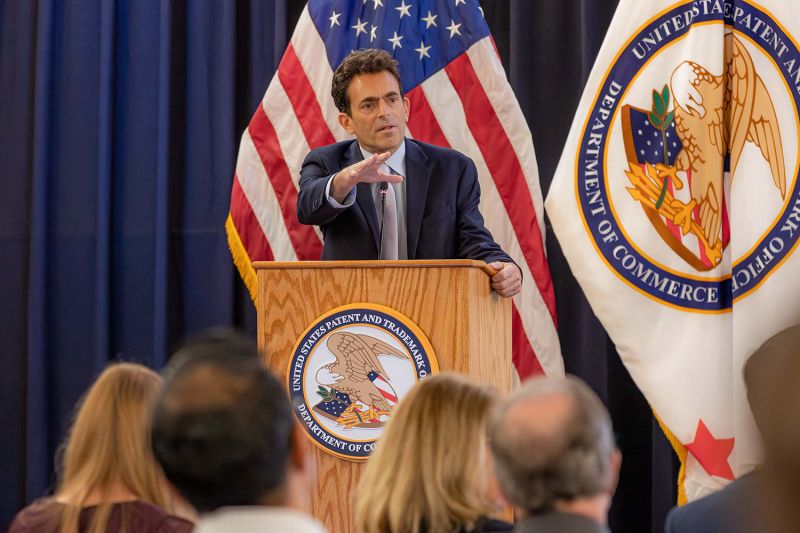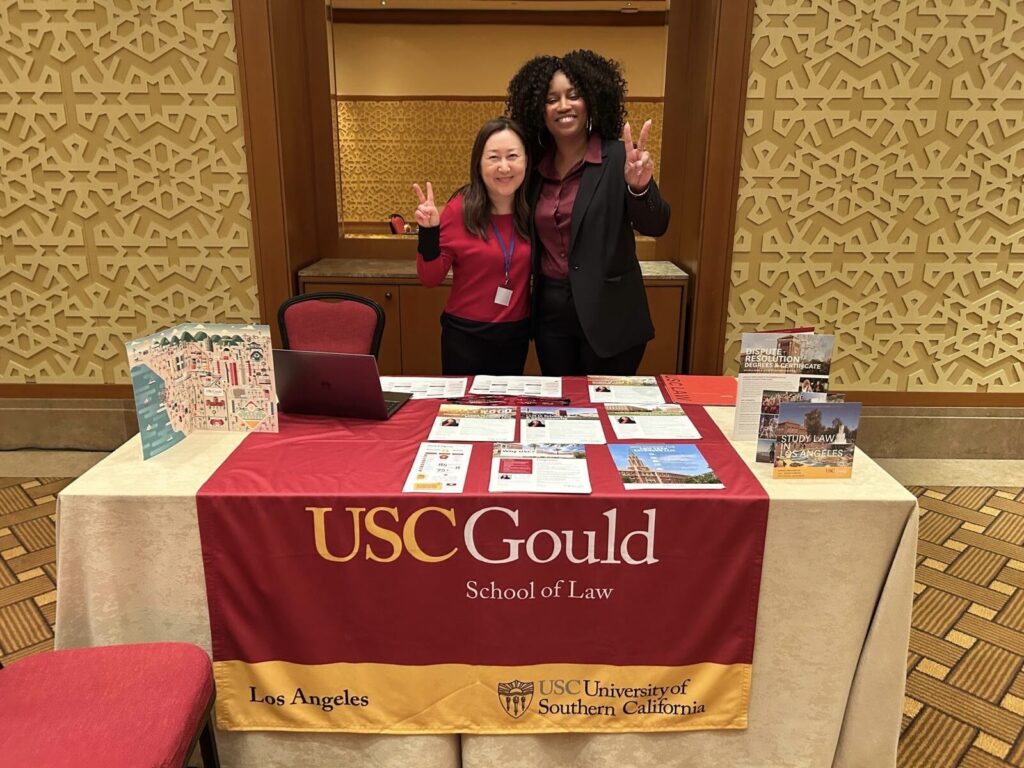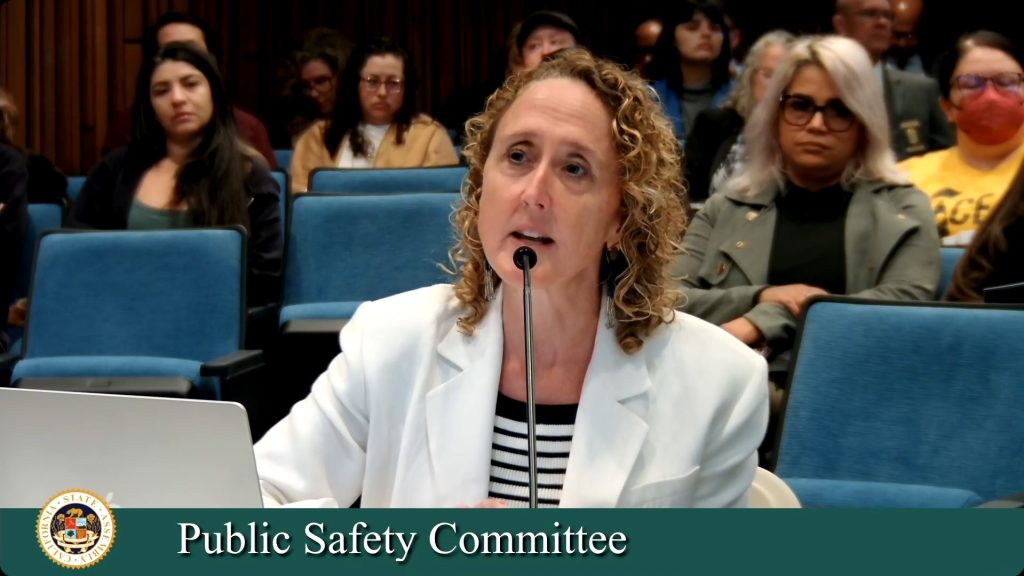Story and photos by Maria Iacobo
Are you devilish if you wear a Prada knock-off?
More likely, you’re helping the fashion industry to thrive, according to Staci Riordan (below), chair of the Fashion Law Practice at Fox Rothschild LLP.
Riordan was one of two speakers last week that offered USC Law students insight into recent cases in the fashion and art worlds. The events were sponsored by the Art Law Society and the Intellectual Property and Technology Society.

If you think fashion doesn’t have a high enough profile to warrant much legal wrangling, think again; the fashion industry generated $200 billion in the U.S. and $700 billion worldwide just two years ago, ranking only second to the food industry.
Riordan provided the audience with the basics of intellectual property as it relates to fashion, and examined why the Design Piracy Prohibition Act has been introduced to Congress for a third time – legislation that would protect the overall design of a garment or other article of fashion.
“The big debate right now is whether fashion should be copyrighted,” said Riordan. “Every idea can be traced back to someone.”
Riordan showed slides of fashions whose designers claim to have been the first to “create” the design, only to show a slide where a similar idea had been “in fashion” 20, 30 or 50 years ago. Eyeglass frames, handbags, luggage, belts, gloves, shoes and hats are just some of the articles where designers have claimed to create a first-ever design.
Riordan, whose family has been in the fashion industry for several generations, pointed out that if the fashion industry does find itself hemmed in by intellectual property rulings, “judges would become the arbiters of fashion innovation.”
Given that this group is pretty much confined to black robes eight hours a day, Riordan contends that the consumer and the industry would suffer.
USC Law Professor Jonathan Barnett authored an important article about fashion in which he argued that fashion industry producers actually prefer weak intellectual property rights in designs so that they can collectively mitigate the high risk of losses in the fashion business by cashing in on seasonal “hit” fashions. The article, “The Fashion Lottery,” is available on SSRN and will be published in this year’s Journal of Legal Studies.
Moral Rights and the Twitchell Case
 Speaking on his landmark case in which his client, muralist Kent Twitchell, settled his lawsuit against the U.S. government and 11 other defendants for painting over his mural in downtown Los Angeles, William Brutacao (at right) discussed the types of rights applicable to artists (proprietary, copyright, moral). An attorney with the Pasadena firm Sheldon Mak Rose & Anderson, Brutocao outlined the history of and reasons for the Federal Visual Artists Rights Act (VARA) and the California Artists Protection Act and how they were invoked to reach a settlement in 2008.
Speaking on his landmark case in which his client, muralist Kent Twitchell, settled his lawsuit against the U.S. government and 11 other defendants for painting over his mural in downtown Los Angeles, William Brutacao (at right) discussed the types of rights applicable to artists (proprietary, copyright, moral). An attorney with the Pasadena firm Sheldon Mak Rose & Anderson, Brutocao outlined the history of and reasons for the Federal Visual Artists Rights Act (VARA) and the California Artists Protection Act and how they were invoked to reach a settlement in 2008.
 Speaking on his landmark case in which his client, muralist Kent Twitchell, settled his lawsuit against the U.S. government and 11 other defendants for painting over his mural in downtown Los Angeles, William Brutacao (at right) discussed the types of rights applicable to artists (proprietary, copyright, moral). An attorney with the Pasadena firm Sheldon Mak Rose & Anderson, Brutocao outlined the history of and reasons for the Federal Visual Artists Rights Act (VARA) and the California Artists Protection Act and how they were invoked to reach a settlement in 2008.
Speaking on his landmark case in which his client, muralist Kent Twitchell, settled his lawsuit against the U.S. government and 11 other defendants for painting over his mural in downtown Los Angeles, William Brutacao (at right) discussed the types of rights applicable to artists (proprietary, copyright, moral). An attorney with the Pasadena firm Sheldon Mak Rose & Anderson, Brutocao outlined the history of and reasons for the Federal Visual Artists Rights Act (VARA) and the California Artists Protection Act and how they were invoked to reach a settlement in 2008. These acts of legislation, said Brutocao, were put in place to forbid the destruction or alteration of certain public works or art without notice to the artist. Artists don’t know all of their rights and it’s vital to clarify what these are before work is commissioned.
“Public art is not bought or sold,” said Brutocao. “It’s almost impossible to put a value on it.”

















